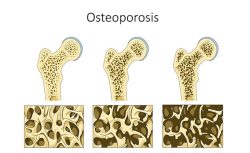I’m lying on an emergency room bed, writhing in agony, screaming in pain, as though my insides are being torn to shreds. I curl up my body, protecting myself from the evil inner force that resides within me, stabbing me, shocking my organs. My mind is frantic, confused, and manic. Lights and sounds mix together around me and I close my eyes to minimize the sensory overload. The white sheets under me feel scratchy and irksome, I can’t deal with any added discomfort. Searing pain bubbles within me, threatening to boil over, and when it does, I let out a scream from the very depths of my soul.
I hear a voice and attempt agonizingly to open my eyes. A woman in a white coat stands in front of me, arms crossed in a stance that conveys a mixture of disdain and apathy.
“Rachel,” she demands, her voice both indifferent and annoyed, “want to tell me why you’re here?”
Is she joking? I wonder to myself while trying to gather my coherent thoughts, does she not see I’m in excruciating pain?
“Pain…” I manage to say, the word more a miserable moan than an answer. “I need meds…”
“I’ll decide what you need,” she replies nastily. “You’ve been here way too many times, asking for medicine each time. You don’t need meds, Rachel, you need to go to rehab. You’re an addict.”
I can’t control my tears any longer and I let them flow freely as I sob uncontrollably. Didn’t she see my chart? Doesn’t she see that I have endometriosis? Does she know how painful it is?
“I have endometriosis,” I muster, “I take normal pain meds every day but they are not working today. The pain is worse than usual!”
And then my senses can’t take the pain any longer, and I scream out desperately once more. All thoughts abscond from my brain, all I can think of is dying to get rid of the pain. The doctor looks at me like I am a dirty piece of clothing on the floor. She purses her lips and then spits out, “I suppose I can give you some Motrin or Tylenol.”
I am so desperate at this point I agree to her pointless suggestion. My head knows the meds will not help, but my body is starving for relief. Needless to say, thirty minutes later the Motrin has left me right where I was before I took it: in paralyzing pain.
A nurse comes into my cubicle a throws a glance at my miserable form. “You’re being discharged!” she sings, as though she is freeing me from jail. Her smile is grotesquely wide as she hands me a pen to sign my name on the discharge papers. I want to explode at her, to hurl words in her face that describe my agony, and wipe that inane grin right off her face. But I don’t. Instead, I meekly take the pen, wait for a moment in which my body is able to stop shaking, and then sign the papers.
“Wheelchair will be here in a minute!” she croons, then leaves me alone with my emotions.
I fold my beaten-up body into the wheelchair feeling completely empty and numb despite the pain. I am so shocked at the experience I just had. I left my heart, soul, and voice in that emergency room, trying my hardest to explain the agony I was in. I laid in front of a doctor trembling with pain, and she in turn called me an addict and sent me away. She didn’t bother to understand what I was going through and didn’t test me to see what drugs I had in my body. Instead, she took my trust, ruthlessly pummeled it, and carelessly threw it away. I leave feeling nothing more than a desire to give up and let it all go. Tonight, I have become one more casualty in the fight for us with endometriosis to be heard.
We Need Your Help
More people than ever are reading Hormones Matter, a testament to the need for independent voices in health and medicine. We are not funded and accept limited advertising. Unlike many health sites, we don’t force you to purchase a subscription. We believe health information should be open to all. If you read Hormones Matter, and like it, please help support it. Contribute now.
Yes, I would like to support Hormones Matter.
Share
If you have an endometriosis story that you would like to share, contact us.
Image by HeungSoon from Pixabay
This article was posted originally in February 2014.












